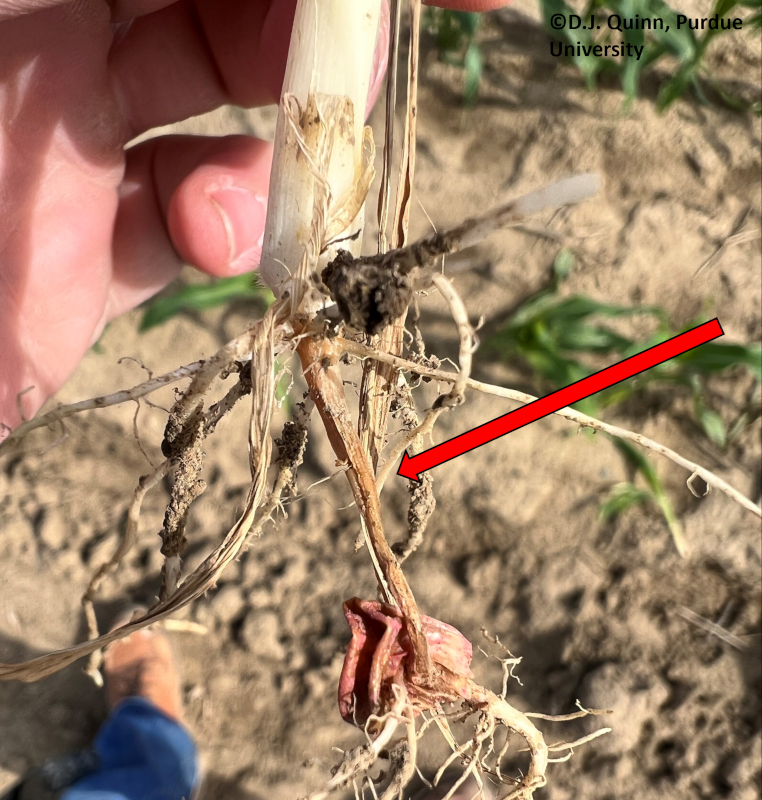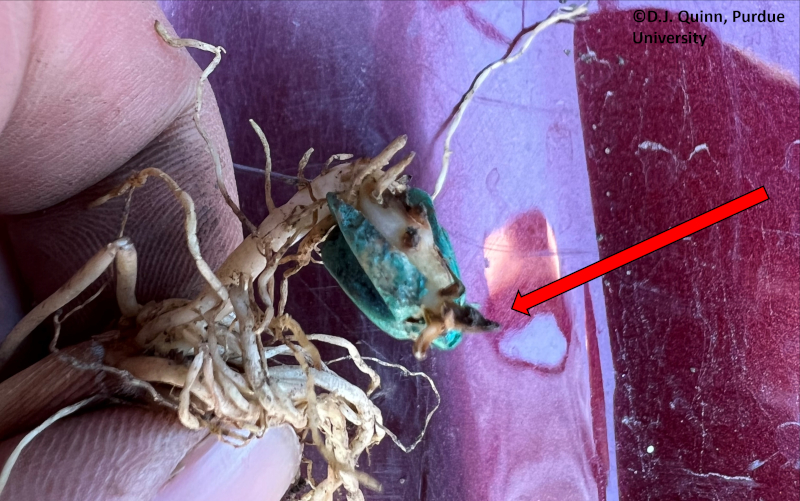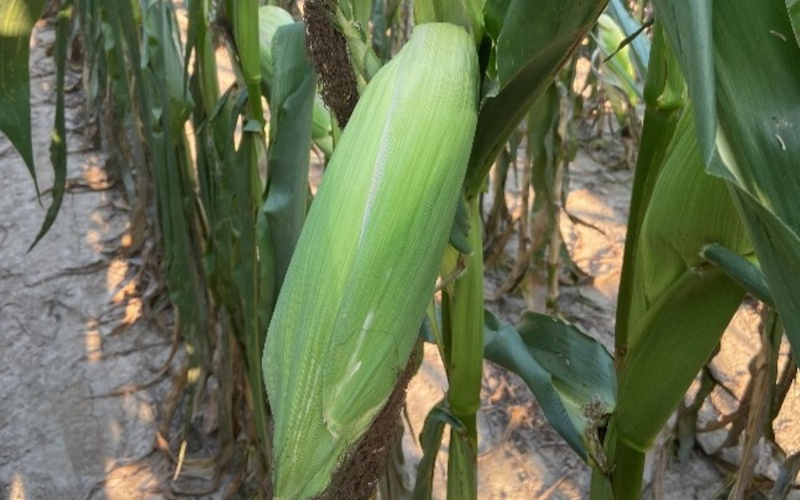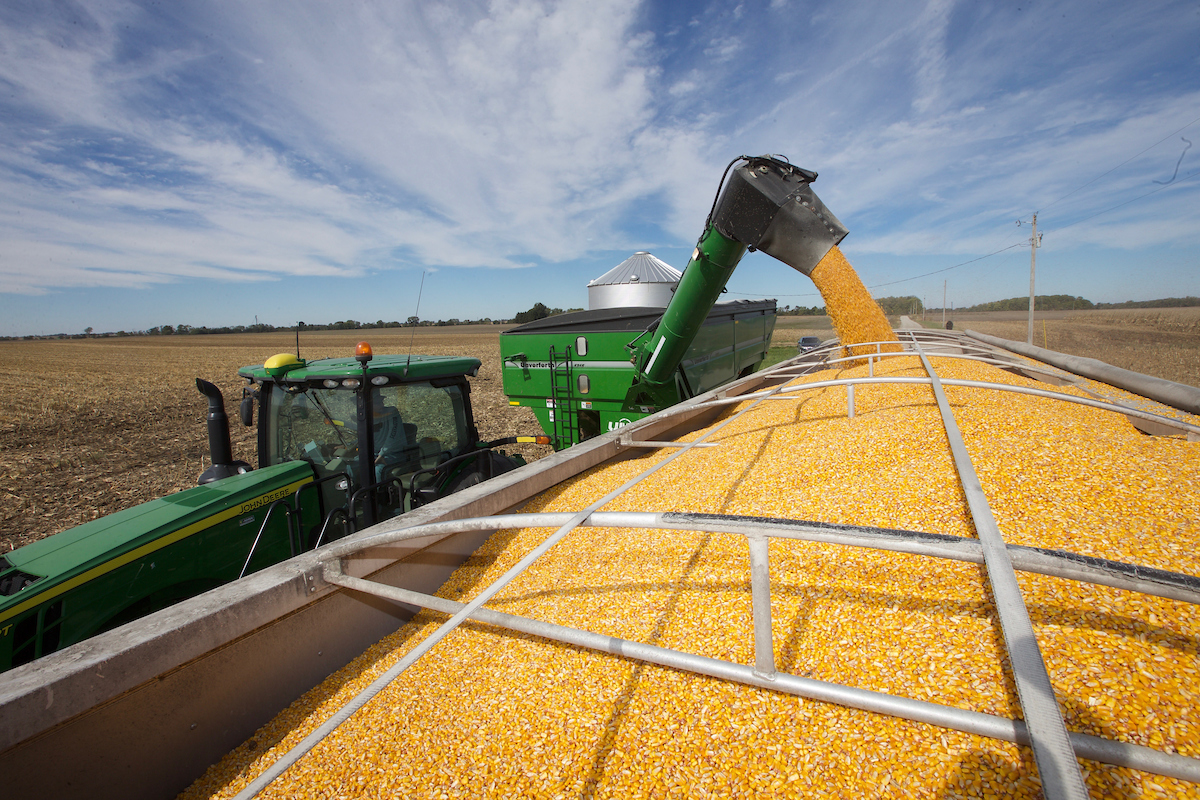Corn Root Damage Caused by Fertilizer
Many farmers in Indiana utilize starter fertilizer applications, specifically applied through the planter and in close proximity to the seed, which are known to provide benefits such as early crop access to necessary nutrients, improved and more rapid plant growth, and reduced grain moisture at harvest. However, placing fertilizer close to the seed at planting can increase the potential for root damage and poor crop establishment, especially when improper products and/or rates are used. In addition, these risks can be exacerbated in coarser soil textures and in drier soil conditions that follow planting.
Damage caused by starter fertilizer applications can typically be identified by examining the roots of a corn plant, especially if there are areas of a field with noticeable stand establishment and/or stand loss issues. Most starter fertilizer damage observed can be attributed to in-furrow, or pop-up fertilizer applications due to fertilizer being placed directly on the seed. However, damage can also occur from 2x2 starter fertilizer applications and from pre-plant anhydrous and urea applications if too high of rates, shallow injection depth, and/or dry conditions at planting are observed. Yet, these application methods can greatly reduce the risk of potential injury as compared to an in-furrow application. Starter fertilizer damage is often most noticeable from a damaged radicle (the first root that emerges from the seed as it develops; Figures 1 and 2). The radicle will typically be short and brown/black in color and almost looks like someone may have taken a lighter to it. In addition, significant damage to the mesocotyl (white, root-like tissue between the seed and the base of the plant) can also occur from excessive starter fertilizer rates (Figure 3).
Corn root damage caused by starter fertilizer is often attributed to the salt content present in fertilizers and the fertilizer salt index is often used to promote and sell safer in-furrow options. However, ammonia formation in the rooting zone from urea-based fertilizers can also contribute to these observed issues. For example, when high rates of nitrogen are applied close to the seed and rooting zone, ammonia can form and result in injury to the roots. Both the risk of injury from ammonia formation and the risk of salt injury are typically why it is important to limit the amount of N + K2O applied in a starter application. However, potassium is typically not recommended in a starter fertilizer application unless soil test levels are low (<70 ppm).
According to the Tri-State Fertilizer recommendations (https://agcrops.osu.edu/FertilityResources/tri-state_info), starter fertilizer applications are less risky when applied in a 2x2 application and rates should range from 20 – 40 lbs per acre of N, P2O5, and K2O and should not exceed a rate of 100 lbs per acre of salt fertilizers (N + K2O). As for in-furrow applications of fertilizers, salt fertilizer (N + K2O) should not exceed 8 lbs per acre on heavier soils and 5 lbs per acre on sandier soils (<5 CEC). In addition, it is also important to avoid the use of thiosulfate products (e.g, ATS) applied in-furrow due to potential seed germination issues.
Figure 1. Corn radicle damage caused by excessively high in-furrow nitrogen fertilizer application. NW Indiana, 2022.

Figure 2. Corn radicle damage caused by excessively high pre-plant N fertilizer application combined with dry soil conditions. NC Indiana, 2023.

Figure 2. Corn mesocotyl damage caused by excessively high 2x2 N fertilizer application (>100 lbs per acre). E Indiana, 2022.







